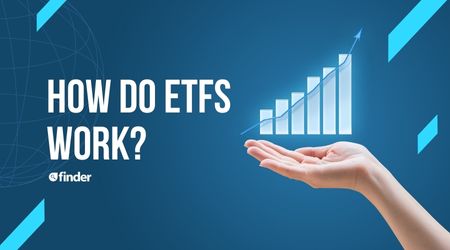Learning how to read stock charts and recognize stock chart patterns can help you make smart investment decisions. Here’s how it works.
What is stock market charting?
Stock charting is the go-to tool for traders using technical analysis. Stock charts are basically line graphs showing the prices of an investment at different points in time. Other details like trading volume may also be depicted.
Stock charts are most commonly used for spotting price and volume patterns when researching stocks. But charting can also be used to research other assets like bonds, commodities, forex and cryptocurrency.
Charts provide a straightforward way to interpret an investment’s past performance and future potential. Seeing a visual representation of prices and market data can make it easier to spot patterns and plot future movements.
How to read stock charts
Here’s a simple step-by-step guide breaking down how to reach stock charts if you’re just starting out:
- Find the trendline. When you look at the price chart of a stock or other asset, your first task is to spot the trendline. This will be the main line on the graph that tracks the price changes and connects them all. Take a look and see if this line is trending upwards, downwards, staying flat or if it’s moving up and down a lot.
- Look for support and resistance levels. This will show you the minimum and maximum price levels that an asset trades within. Finding this range for a given period of time can give you a good floor and ceiling to work with when you’re setting up trades. But remember these lines can still be broken.
- Understand the dividend schedule. Many stocks and shares will pay dividends to shareholders. For many dividend-paying stocks, this will happen a few times a year. It’s worth being aware of these dates because they can temporarily push the price up or down, before or after a payout.
- Learn about past volume. At the bottom of most charts, you’ll notice lots of small vertical lines. These show the historical trading volume of an investment. High or low trading volume can coincide with news and it shows if the asset was being bought or sold by many or few investors.
Types of stock chart patterns
Here are some of the most important stock chart patterns you might come across:
- Ascending/descending/symmetrical triangles
- Pennants: 2 converging trendlines
- Flags: 2 parallel trendlines
- Wedges: 2 converging trendlines angled up or down
- Double bottom/top: Short-term swing followed by a failed attempt to break a resistance or support level
- Head and shoulders: 2 smaller price movements on either side of a larger movement
- Rounding top or bottom: U-shape at the bottom or top
- Cup and handles: Bullish pattern with a pause in the upward momentum
- Gaps: Empty space between trading periods where there’s a price jump
Which stock charts are useful for trading?
The best charts to use for stock trading clearly show the previous prices and trading volume for a particular stock or asset. The most popular types of charts used for trading are:
- Line charts
- Bar charts
- Candlestick charts
Where can you read a stock chart?
If you’re looking for basic historical price and volume data, you can access plenty of charting tools from major finance publications and websites.
It can sometimes be difficult to find charts for less popular investments or charts that show comprehensive historical data. Most free stock charts only cover a certain period of time, say, 5-15 years. You can find these basic charts from:
- Google Finance
- Yahoo Finance
- The Motley Fool
- Morningstar
- Hargreaves Lansdown
Stock charting: Benefits and warnings
Benefits
- Understand historical price movements at a glance
- Easily spot uptrends and downtrends
- Visualized price patterns can reveal investment volatility
- Helps you find low-risk entry and exit points for trades
- Provides a solid overview for an investment when paired with fundamental analysis
What to watch out for
- Interpreting stock charts isn’t an exact science
- There’s no guarantee that stocks will move according to a predictable pattern
- Charts don’t provide everything you need to know about an investment
- Chart interpretation can be subjective
- Relying on charts can be time consuming given how often investments change in value
Open a stock trading account
Finder Score for stock trading platforms
To make comparing even easier we came up with the Finder Score. Trading costs, account fees and features across 10+ stock trading platforms and apps are all weighted and scaled to produce a score out of 10. The higher the score the better the platform - simple.
Bottom line
Learning how to read stock charts and spot chart patterns can help you understand securities thoroughly and make smart investment choices. But charts don’t tell you everything about an investment, so make sure you reference other research tools and data sources before making any trades.
Frequently asked questions
More on investing

What are the best stocks for beginners with little money to invest?
Want to dive into investing but don’t have much to spend? Take a look at these types of stocks.
Read more…
Meme stocks: What they are and examples of popular stocks
Meme stocks can produce large gains in short periods, but the stocks are volatile.
Read more…
How do ETFs work?
Your guide to how ETFs work and whether this type of investment is right for you.
Read more…More guides on Finder
-
Best paper trading platforms and demo accounts for 2025
How to choose the best paper trading platform to help you learn the ins and outs of investing.
-
Quantum computing stocks
Microsoft, IBM, IONQ, Rigetti and Quantum Computing are some of the top stocks to buy in this category. See how to get started here.
-
How will tariffs affect the stock market?
Find out how the Trump tariffs will impact the stock market and explore Canadian stocks that may be resilient amidst tariffs.
-
Can I buy DeepSeek stock in Canada?
DeepSeek isn’t publicly traded, but you can invest in similar companies or swoop in on stocks impacted by the DeepSeek effect.
-
What are the best stocks for beginners with little money to invest?
Want to dive into investing but don’t have much to spend? Take a look at these types of stocks.
-
Trading promos & investment account bonuses for 2025
Enjoy perks like free trades and cash back when you open a stock trading account with these online broker promotions.
-
TD Easy Trade review
Use this self-directed trading app to learn the basics of investing with a streamlined app and a number of free trades annually.
-
Best renewable energy stocks
These are the best renewable energy stocks to buy now in Canada.
-
Best stocks to buy right now in Canada
Finder’s unique algorithm found the 20 best TSX stocks to buy right now.
-
TD Direct Investing Review
Make quick and easy trades using this reputable online trading platform from TD.
